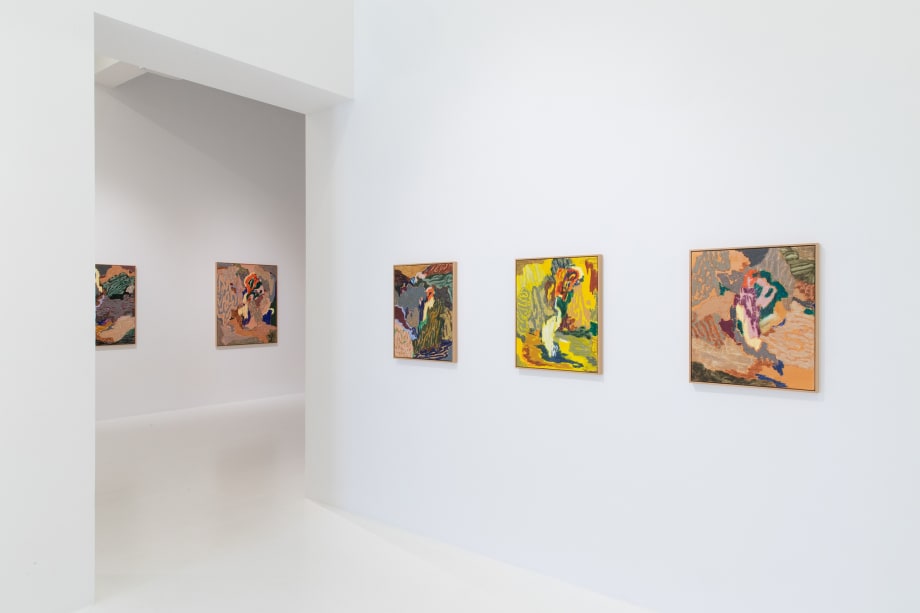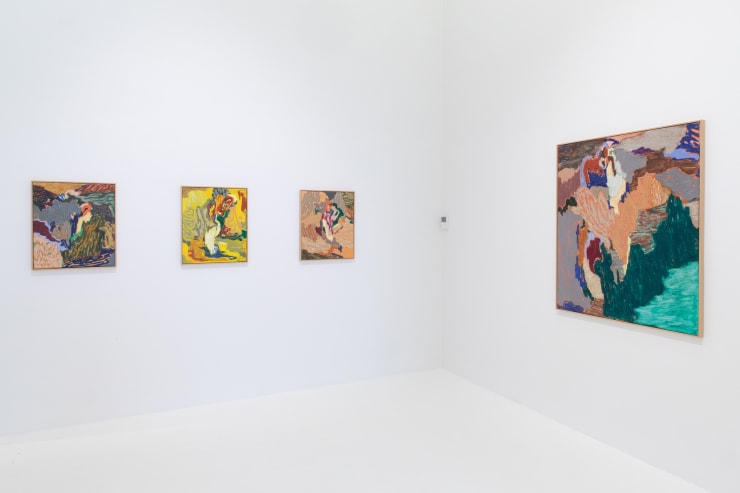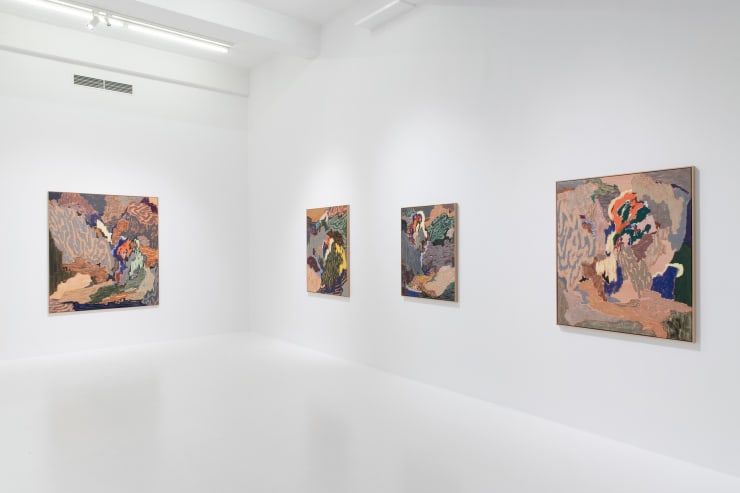Guðmundur Thoroddsen: Skriður // Drifts
Current exhibition
Images
Overview
Skriður // Drifts
Note: The Icelandic word skriða holds multiple meanings, e.g., landslide, avalanche, drift, flow, and crawl to name a few. In this text we will use the word skriða to refer to these multiple meanings.
In this country, many places bear the name Skriða, a word which describes a common phenomenon in the Icelandic landscape; skriða occurs when mud and rocks slide from a mountainside down to the lowland. Skriða is an indistinct form, a phenomenon where things are in motion or on its way to someplace else. Most of the time with unpredictable consequences, so it's best not to dwell on it. In recent years skriður have increased and are in the minds of many considered a dangerous natural hazard. Skriða applies precisely to movement, but usually in a positive sense: Skriða is progression, to move forward. Most of us start by crawling, then straighten up to walk upright and move forward in life. But at the same time the uncertainty starts, because how do we know where to go? At the exhibition SKRIDUR, Guðmundur Thoroddsen shows new paintings from this year where he continues his interesting experiments with oil sticks. The paintings can be seen as a logical continuation of a large work that was created with the oil sticks and exhibited at the Chart Art Fair in Copenhagen in 2023, and later at the exhibition Some recent works - new acquisitions, at the Icelandic National Gallery, 2023/24. The works in the exhibition are all oil paint and oil stick on linen canvas, which he mixes and creates himself. The artist lets the color and texture of the sticks guide him rather than having a specific subject in mind. In the process, Guðmundur tries not to let ideas get in his way, and in this sense, he has reached the familiar paths of abstract art. In the exhibition, it is difficult to distinguish figures or faces in the picture plane, as in many of the artist's previous works, where he has often tested the limits of the objective and abstract in a memorable way. Guðmundur is not an abstract painter, because here you can see resembling of nature in the works and the titles refer directly to various landscape phenomena. But he is not a landscape painter either. The works do not have a preconceived place in mind, he is not painting a specific landslide, but rather that nature is a formal frame or conceptual structure around the works that creates a familiarity for the audience (and possibly the artist himself); so that we are not completely adrift when we face the works, but with solid ground under our feet. One wonders if this is not an Icelandic phenomenon, that is, to see a landscape in all things created: a horizon here and a mountain range there, sea and land, rocks, and blockfields. Guðmundur is aware of this as well as standing firmly in his dialogue with the art history. In this way, the new works also indirectly refer to the pioneers of Icelandic painting, such as Svavar Guðnason (1909-1988), who also worked with the boundaries of the natural and imaginary in his works. When we are faced with works of art, it is not uncommon to ask ourselves where the artist is presently in his art practice, or where he is going. I don't think it is timely to answer these specific questions in the case of this exhibition. Guðmundur Thoroddsen’s new paintings are not pictures of places, they are not static but, on the move, on the way to someplace else. In this way, they are much more of aguide to unexplored lands that the artist alone navigates. At the exhibition SKRIDUR we getto join him on his journey.
In this country, many places bear the name Skriða, a word which describes a common phenomenon in the Icelandic landscape; skriða occurs when mud and rocks slide from a mountainside down to the lowland. Skriða is an indistinct form, a phenomenon where things are in motion or on its way to someplace else. Most of the time with unpredictable consequences, so it's best not to dwell on it. In recent years skriður have increased and are in the minds of many considered a dangerous natural hazard. Skriða applies precisely to movement, but usually in a positive sense: Skriða is progression, to move forward. Most of us start by crawling, then straighten up to walk upright and move forward in life. But at the same time the uncertainty starts, because how do we know where to go? At the exhibition SKRIDUR, Guðmundur Thoroddsen shows new paintings from this year where he continues his interesting experiments with oil sticks. The paintings can be seen as a logical continuation of a large work that was created with the oil sticks and exhibited at the Chart Art Fair in Copenhagen in 2023, and later at the exhibition Some recent works - new acquisitions, at the Icelandic National Gallery, 2023/24. The works in the exhibition are all oil paint and oil stick on linen canvas, which he mixes and creates himself. The artist lets the color and texture of the sticks guide him rather than having a specific subject in mind. In the process, Guðmundur tries not to let ideas get in his way, and in this sense, he has reached the familiar paths of abstract art. In the exhibition, it is difficult to distinguish figures or faces in the picture plane, as in many of the artist's previous works, where he has often tested the limits of the objective and abstract in a memorable way. Guðmundur is not an abstract painter, because here you can see resembling of nature in the works and the titles refer directly to various landscape phenomena. But he is not a landscape painter either. The works do not have a preconceived place in mind, he is not painting a specific landslide, but rather that nature is a formal frame or conceptual structure around the works that creates a familiarity for the audience (and possibly the artist himself); so that we are not completely adrift when we face the works, but with solid ground under our feet. One wonders if this is not an Icelandic phenomenon, that is, to see a landscape in all things created: a horizon here and a mountain range there, sea and land, rocks, and blockfields. Guðmundur is aware of this as well as standing firmly in his dialogue with the art history. In this way, the new works also indirectly refer to the pioneers of Icelandic painting, such as Svavar Guðnason (1909-1988), who also worked with the boundaries of the natural and imaginary in his works. When we are faced with works of art, it is not uncommon to ask ourselves where the artist is presently in his art practice, or where he is going. I don't think it is timely to answer these specific questions in the case of this exhibition. Guðmundur Thoroddsen’s new paintings are not pictures of places, they are not static but, on the move, on the way to someplace else. In this way, they are much more of aguide to unexplored lands that the artist alone navigates. At the exhibition SKRIDUR we getto join him on his journey.
- TEXT BY H.K.RANNVERSSON
Installation Views











